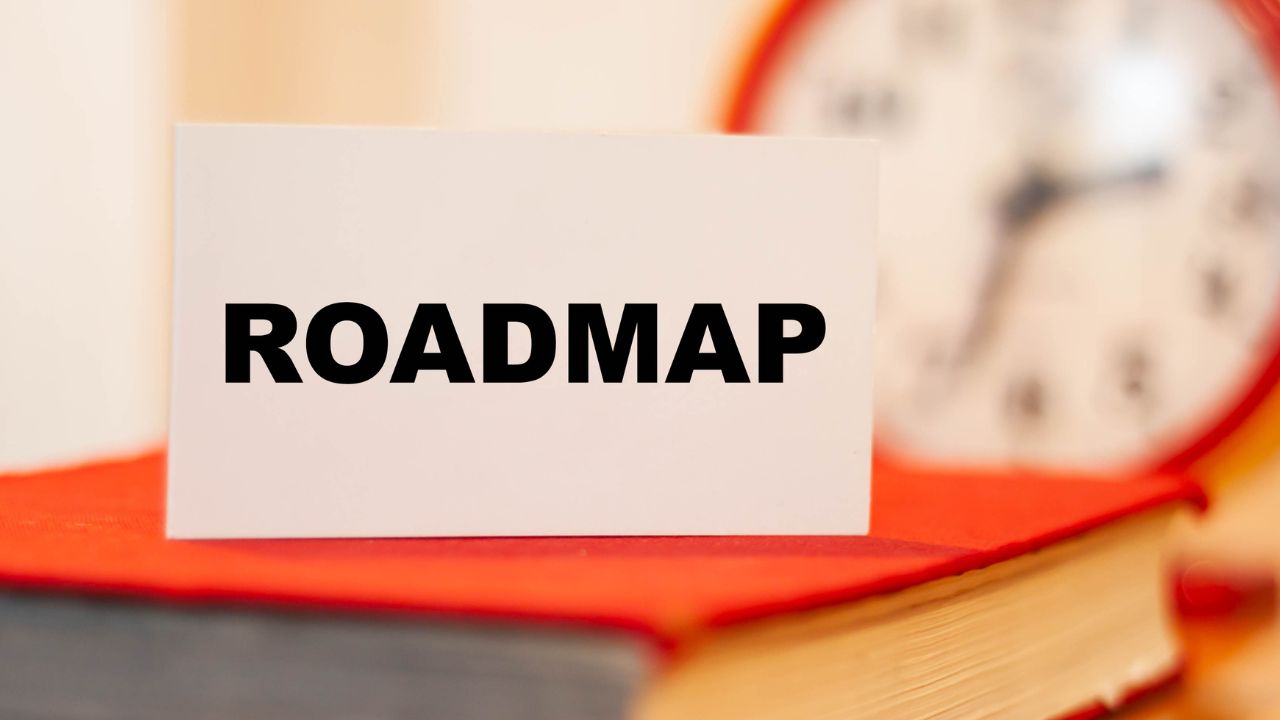Imagine trying to build a house without a blueprint. You might have the best materials and a skilled crew, but without a plan, you’d likely end up with a confusing, unstable structure. Walls might not line up, rooms would be disconnected, and the final result would be far from what you envisioned. The same principle applies to your business when you operate without a brand strategy roadmap.
A brand strategy roadmap is your business’s blueprint for success. It’s a detailed, long-term plan that outlines how you want to shape customer perception and build a specific reputation. It goes beyond a simple logo or color scheme; it provides direction, ensures consistency, and guides every decision you make, from marketing campaigns to customer service interactions. Without this crucial guide, your efforts can become scattered, your messaging inconsistent, and your growth stunted.
What is a Brand Strategy Roadmap?
First, let’s clarify what a brand strategy roadmap is. It’s a comprehensive document that details your company’s mission, defines your target audience, and sets clear branding goals. It acts as a central guide for all your branding efforts, ensuring that every piece of content, every product launch, and every social media post works together to build a strong brand.
This roadmap isn’t just a marketing document; it’s a core business asset. It forces you to think deeply about who you are as a company and how you want to be seen. Developing a brand strategy roadmap is an investment in your company’s future, providing a clear path to becoming recognizable and memorable in a crowded marketplace.
The Key Elements of a Powerful Brand Strategy
To understand its importance, you need to know what goes into creating a brand strategy roadmap. A robust plan contains several key elements that work together to form a cohesive direction for your business. These are the fundamental elements of a brand strategy that you cannot afford to overlook.
Here are the core components:
- Brand Purpose and Core Values: This is your “why.” Why does your business exist beyond making a profit? What principles guide your actions? This forms the heart of your brand identity.
- Target Audience Personas: You can’t resonate with your audience if you don’t know who they are. This involves deep research into your ideal customers, understanding their demographics, behaviors, and, most importantly, their pain points.
- Brand Messaging and Tone of Voice: This defines what you say and how you say it. Your brand messaging should communicate your value proposition clearly and consistently. Your tone should be distinct and appropriate for your target audience.
- Competitive Analysis: Understanding where you stand in the market is vital. Analyzing your competitors helps you identify opportunities to differentiate your brand and carve out a unique space.
- Branding Elements: This includes your visual identity, like your logo, color palette, and typography. These visual cues are often the first interaction a customer has with your brand, so they need to align perfectly with your overall strategy.
Crafting a plan with these elements ensures every action you take is intentional and contributes to your long-term branding goals.
Aligning Your Business for Consistent Growth
One of the biggest benefits of a brand strategy roadmap is its ability to create alignment across your entire organization. When every team, from sales to product development to marketing, understands the brand’s goals and messaging, they can work together seamlessly.
This alignment prevents the kind of internal confusion that leads to a disjointed customer experience. For instance, if your marketing team promotes your products or services as premium and high-end, but your customer service team is trained to prioritize speed over quality, the customer receives conflicting signals. This erodes trust and weakens your brand.
A detailed brand strategy roadmap serves as the single source of truth. It empowers employees to make on-brand decisions independently, fostering a culture where everyone is a brand ambassador. This consistency is what transforms a simple business into a strong brand that customers trust and advocate for.
Connecting Deeply with Your Target Audience
Your brand exists in the minds of your customers. To build a powerful connection, you need to understand them on a deeper level. A brand strategy roadmap forces you to move beyond basic demographics and uncover the true pain points and desires of your target audience.
When you create a brand strategy, you research to learn what truly matters to your customers. What problems are they trying to solve? What values do they hold? This insight allows you to craft brand messaging that will resonate with your audience on an emotional level.
People don’t just buy products; they buy solutions and identities. They choose brands that reflect their own values and aspirations. By using your roadmap to guide your communication, you can show your audience that you understand them and are uniquely equipped to meet their needs. This connection is essential for building loyalty and turning one-time buyers into lifelong fans.
How to Increase Brand Awareness Strategically
Building brand awareness is a common goal, but without a plan, your efforts can be like shouting into the wind. A brand strategy roadmap provides the focus needed to increase brand awareness effectively. Instead of trying to be everywhere at once, your roadmap helps you identify the most impactful channels and tactics.
For example, your roadmap might reveal that your target audience is highly active on specific social media platforms or professional networks. This allows you to concentrate your resources there, creating tailored content that speaks directly to them.
Your roadmap also ensures your brand is presented consistently everywhere. Whether a potential customer sees your ad on Facebook, reads a blog post, or encounters your packaging, the experience should be cohesive. This repetition and consistency are what make your brand recognizable and memorable over the long term, cementing it in the minds of your audience.
Q: What is the Difference Between a Brand Strategy and a Brand Strategy Roadmap?
A: A brand strategy is the high-level thinking about your brand’s purpose, promise, and position in the market. A brand strategy roadmap is the actionable, step-by-step plan that documents this strategy and details how you will implement and measure it over time. The roadmap turns the “what” and “why” of your strategy into the “how” and “when” of execution.
A Foundation for Measurable Success
How do you know if your branding efforts are working? Without a clear plan, it’s difficult to tell. A brand strategy roadmap establishes clear branding goals and key performance indicators (KPIs) from the start, making it possible to measure the success of your initiatives.
These goals might include:
- Increasing brand awareness by a certain percentage.
- Improving brand sentiment on social media.
- Boosting website traffic from organic search.
- Growing customer loyalty and repeat purchases.
By setting these benchmarks, you can track your progress and make data-driven decisions. If a particular campaign isn’t performing as expected, your roadmap gives you the context to understand why and adjust your approach. This process of measuring, learning, and optimizing is what ensures your brand continues to evolve and strengthen over the long term. Developing a brand without metrics is like navigating without a compass.
Paving the Way for Long-Term Resilience
Markets change, trends come and go, and new competitors emerge. A business without a strong brand identity is vulnerable to these shifts. A brand strategy roadmap builds resilience by creating a brand that is more than just its products or services.
When you have a strong brand, you have an asset that transcends market fluctuations. Your customers are loyal not just because of what you sell, but because of who you are and what you stand for. This loyalty provides a stable foundation that can weather economic downturns and competitive pressures.
Your brand strategy roadmap is a living document. It should be reviewed and updated periodically to ensure it remains relevant. However, the core purpose and values it establishes provide an anchor, ensuring that even as you adapt your tactics, your brand’s essence remains consistent and strong.
Ready to stop guessing and start building a brand that lasts? A clear plan is the first step. To discover how a tailored brand strategy roadmap can transform your business, explore the expert guidance available at Marketing Immersion.






